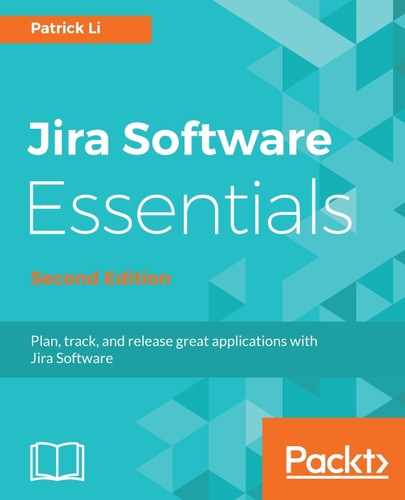Kanban is another agile methodology that is supported by Jira Software. Unlike Scrum (which was introduced in Chapter 2, Jira Software for Scrum), which revolves around the notion of running your project in planned iterations called sprints, Kanban does not run in iterations, or rather, the use of iteration is optional with Kanban.
In a nutshell, Kanban has the following three concepts:
- Visualizing workflow: This breaks down your tasks (issues) and puts them on the board. You need to organize your board so that each column represents a status in your overall workflow, ordered from left (start) to right (finish).
- Limiting the work in progress (WIP): This sets minimum and maximum limits for how many tasks can be in any given workflow status.
- Measuring the lead time: This calculates the average time required to complete one task, keeping it as low and predictable as possible.
While Scrum requires the team to plan iterative sprints with managed scopes, and focuses on team velocity, Kanban is more flexible, as its focus is more around cycle time. Cycle time is the measurement of the amount of time it takes for an issue, or unit of work, to transition through the team's workflow from end to end. The goal is to reduce the cycle time, identify any problems and bottlenecks in the workflow, and address them to get the process to flow smoothly again. As we will see, Jira provides a number of tools to help with this.
